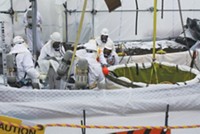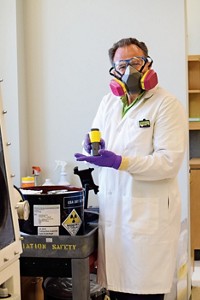Advertisement
Grab your lab coat. Let's get started
Welcome!
Welcome!
Create an account below to get 6 C&EN articles per month, receive newsletters and more - all free.
It seems this is your first time logging in online. Please enter the following information to continue.
As an ACS member you automatically get access to this site. All we need is few more details to create your reading experience.
Not you? Sign in with a different account.
Not you? Sign in with a different account.
ERROR 1
ERROR 1
ERROR 2
ERROR 2
ERROR 2
ERROR 2
ERROR 2
Password and Confirm password must match.
If you have an ACS member number, please enter it here so we can link this account to your membership. (optional)
ERROR 2
ACS values your privacy. By submitting your information, you are gaining access to C&EN and subscribing to our weekly newsletter. We use the information you provide to make your reading experience better, and we will never sell your data to third party members.
Environment
U.S. Energy Department awards $40 million to speed nuclear waste cleanup
Multi-investigator research centers to focus on weapon production wastes
by Jessica Morrison
July 19, 2016

Four new research centers announced on July 18 by the Department of Energy will collectively get up to $40 million to focus on a decades-old environmental problem: cleaning up nuclear waste from weapons production.
The centers will focus on chemical separation of nuclear waste streams and materials development for long-term containment.
Millions of cubic meters of nuclear waste remain at DOE sites from nuclear weapon research and production during the Cold War. Decades into remediation, the department has spent billions of dollars on cleanup efforts already, and optimistic estimates say the work could continue for another half century.
Many believe the effort has taken too long and cost too much, says Andrew R. Schwartz, a senior advisor for DOE’s Energy Frontier Research Centers (EFRC) program. Tapping into emerging science could help the agency accelerate the process and do it in safer and more cost-effective ways, he adds.
EFRCs are meant to work quickly on big energy problems. But the new centers’ basic research is not expected to have an impact on clean-up during the next year or two, Schwartz says.
“If we do this science now and the projects lead to new fundamental understanding, that might change the way we approach the cleanup problem in the future,” he says.
The multi-disciplinary, multi-investigator EFRCs on nuclear waste cleanup will be led from Florida State University, Ohio State University, University of South Carolina, and the Pacific Northwest National Laboratory.
The new centers will join 32 existing EFRCs with research themes in a variety of energy-related topics, including biofuel conversion, carbon dioxide sequestration, and electrical energy storage. DOE says it will spend up to $40 million on the nuclear waste cleanup centers, awarding $2 million to $4 million per year to each for up to four years.
The EFRC program began in 2009. DOE poured $777 million into centers during the effort’s first five years.




Join the conversation
Contact the reporter
Submit a Letter to the Editor for publication
Engage with us on Twitter